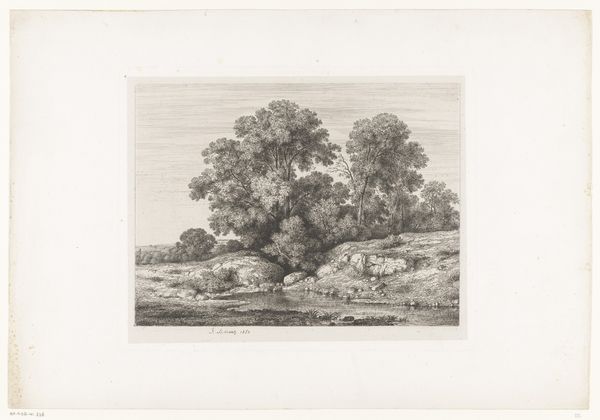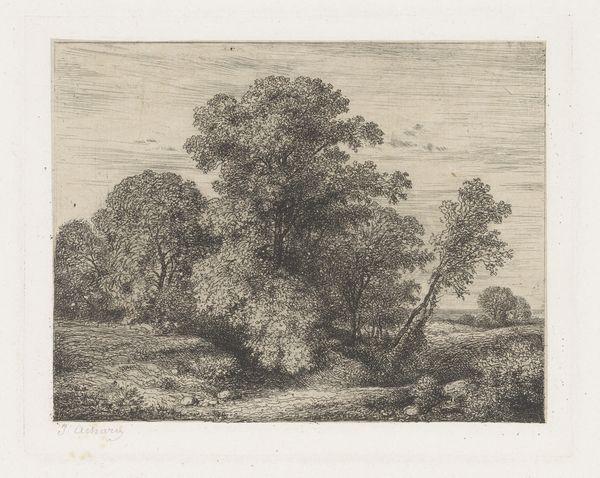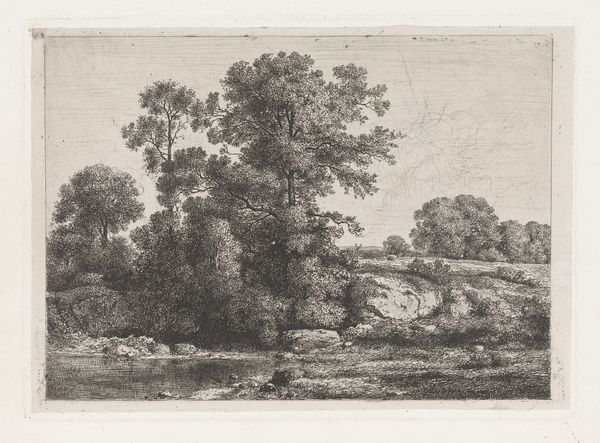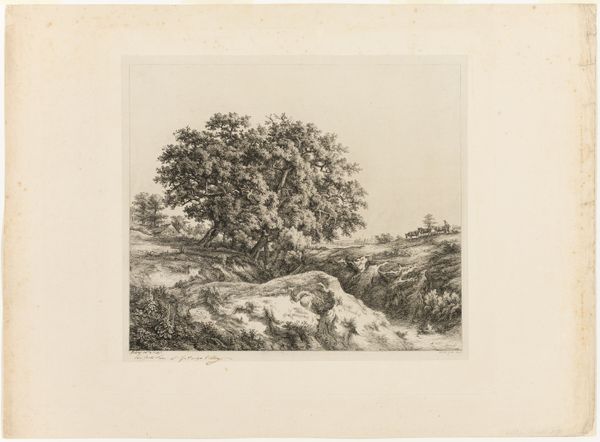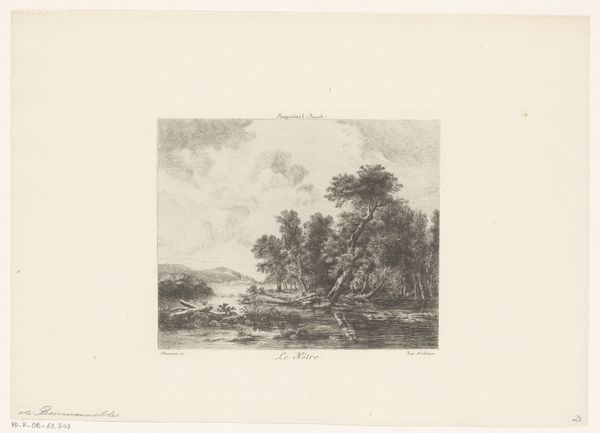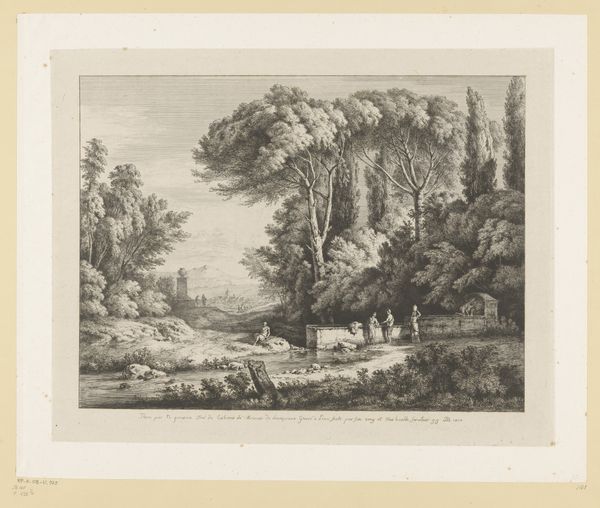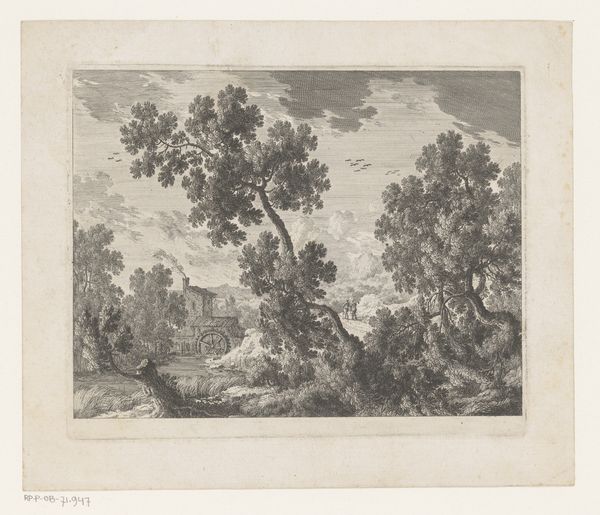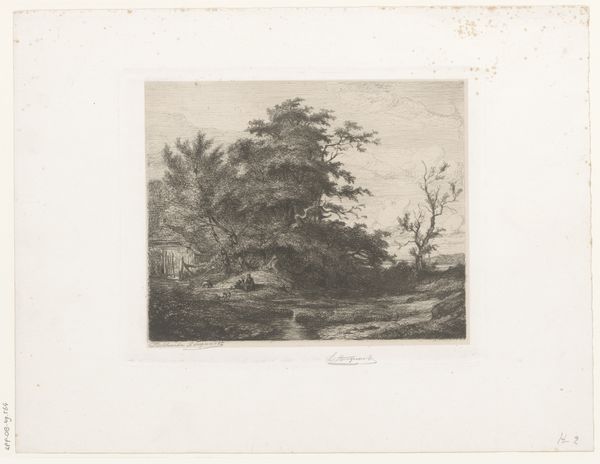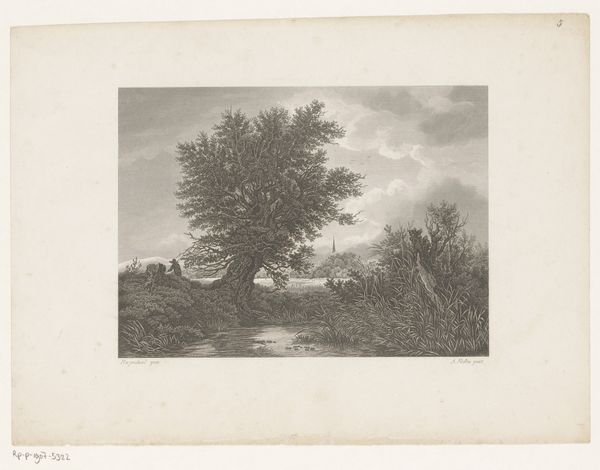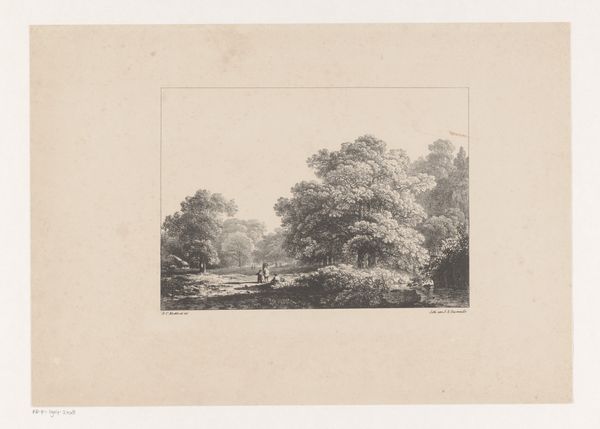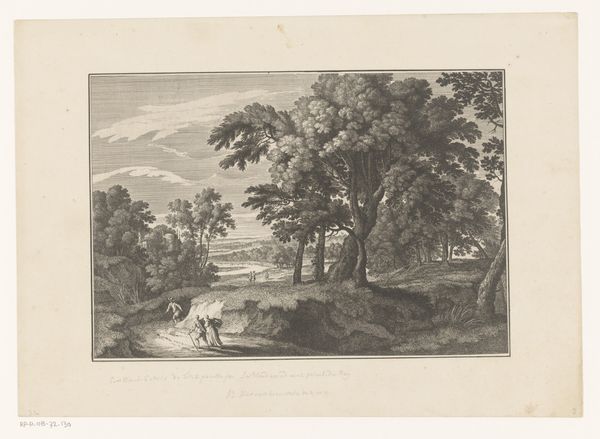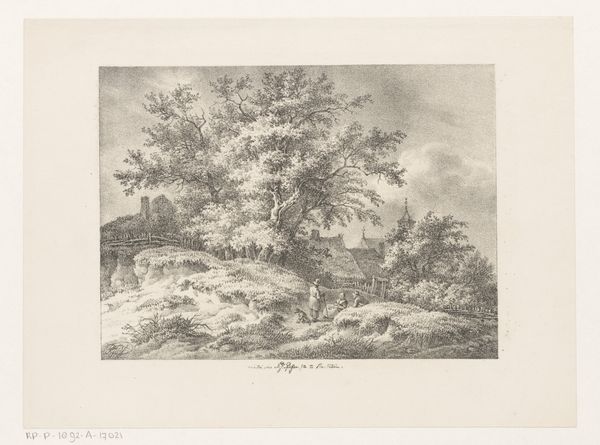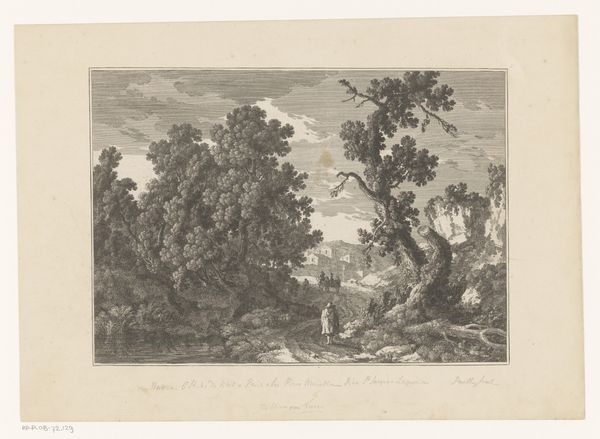
drawing, etching, paper
#
tree
#
drawing
#
etching
#
landscape
#
paper
#
romanticism
Dimensions: height 120 mm, width 153 mm, height 127 mm, width 160 mm
Copyright: Rijks Museum: Open Domain
Editor: This is "Bomen en struikgewas op een heuvel," or "Trees and Shrubs on a Hill," an 1850 etching by Jean Alexis Achard. It's interesting, kind of quiet, with a dense cluster of trees taking up most of the composition. As an etching, what should I be noticing about the artist's process here? Curator: I think focusing on the materiality is crucial here. Consider the choice of etching itself. It’s a reproductive medium. Achard is not just representing nature, but manufacturing its image. Editor: Manufacturing? Curator: Precisely. How does the *mechanical* reproduction through etching – acid biting into metal, then transferring that image to paper – influence our reading of this Romantic landscape? Does it feel more mass-produced, less unique, than a painting? Editor: I see your point. Romanticism idealized nature as pure and untouched. But etching is so… mediated. Curator: Exactly! This tension highlights a contradiction: the desire for an unmediated experience of nature clashing with the industrialized world capable of producing it in multiples. Editor: So, the artwork becomes less about the scene depicted and more about how we consume and commodify images of nature? Curator: It asks us to consider Romanticism not just as an artistic movement, but a cultural phenomenon intertwined with evolving modes of production. Editor: I never thought about it that way before. I’ll definitely look at other Romantic landscapes with this perspective. Thank you. Curator: And consider how it may resonate today with the digital mediation of nature through photography, social media and so on.
Comments
No comments
Be the first to comment and join the conversation on the ultimate creative platform.
